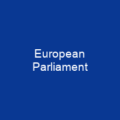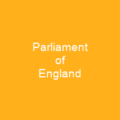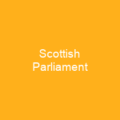Parliaments: The Heartbeat of Democracy
The Origin and Evolution of Parliaments
Have you ever wondered where the term ‘parliament’ comes from? It’s a word that has deep roots in history, tracing back to the 14th century. Parliament, derived from Old French ‘parlement’, means discussion or discourse—a fitting description for these legislative bodies.
The first modern parliament is often cited as the Cortes of León in 1188, but ancient societies like Mesopotamia and India had forms of deliberative assemblies. These early institutions laid the groundwork for what we now recognize as parliaments today.
Parliaments Around the World
Around the globe, parliaments take on various shapes and sizes. From the United States House of Representatives to the British Parliament, each has its unique structure and function. But how do they all fit into the broader picture?
National Legislatures
Let’s start with some familiar faces: the United States House of Representatives, the British Parliament, and the French National Assembly. These national legislatures are at the heart of their respective countries’ political systems, shaping laws that affect millions.
Provincial and State Assemblies
In Canada, for example, provincial assemblies like those in Ontario and Quebec play a crucial role. Similarly, states in Australia such as New South Wales and Victoria have their own legislative bodies. These local parliaments ensure that regional needs are met while still aligning with national policies.
Local Councils
Even at the municipal level, councils like those found in cities across India—Andhra Pradesh and Maharashtra—are vital for community governance. They handle issues ranging from public safety to infrastructure development, ensuring that citizens’ voices are heard close to home.
Supranational Institutions
For countries with shared interests, supranational institutions like the European Parliament, Pan-African Parliament, and Latin American Parliament come into play. These bodies represent broader regional or international concerns, fostering cooperation and unity among nations.
The Role of Parliaments in History
Parliaments have played pivotal roles throughout history. From the Model Parliament in 1295 to the execution of King Charles I in 1649, these legislative bodies have been at the forefront of political change. The English Parliament’s evolution from the Witenagemot to the modern Westminster system is a testament to their adaptability and resilience.
The Portuguese Cortes, established as early as 1211, were instrumental in establishing parliamentary traditions across Europe. Their influence can be seen in institutions like the Polish Sejm and the Scottish Parliament, which have shaped governance in their respective countries for centuries.
Modern Parliaments: The Future of Governance
In Poland, the Round Table Talks in 1989 marked a significant turning point. The signing of the Round Table Agreement led to the restoration of democratic institutions and the adoption of a new constitution. This event symbolized the triumph of democracy over authoritarianism.
The Polish Sejm, now reformed into a more balanced bicameral system, continues to play a crucial role in shaping the country’s future. The Constitution of 1997 introduced a ‘rationalised’ parliamentary-cabinet system, ensuring that power is distributed fairly and efficiently.
Conclusion
Parliaments are not just buildings or institutions; they are the lifeblood of democracy. From ancient assemblies to modern legislatures, these bodies have evolved over centuries, adapting to changing times while maintaining their core purpose: representing the people and shaping the future. As we look towards the future, parliaments will continue to be at the forefront of political change, ensuring that the voices of citizens are heard.

You want to know more about Parliament?
This page is based on the article Parliament published in Wikipedia (retrieved on December 27, 2024) and was automatically summarized using artificial intelligence.







